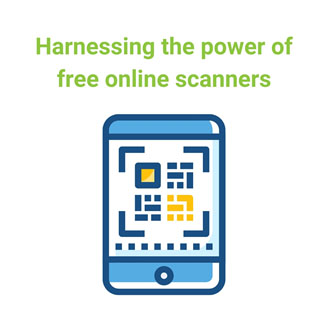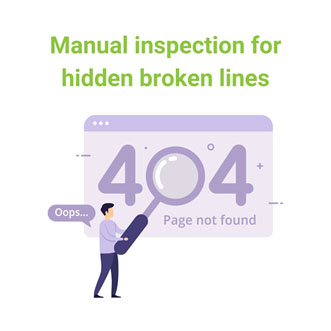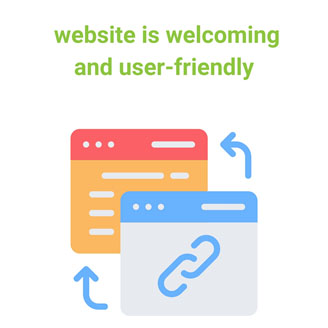Introduction
In the intricate web of website management and search engine optimization (SEO), broken links stand as formidable adversaries. These digital glitches, akin to roadblocks on the information highway, not only disrupt user experience but also cast a shadow on a website’s SEO performance. Broken links, whether internal or external, lead visitors to dead ends, resulting in frustration and diminished trust in the website’s credibility.
From the perspective of SEO, broken links signal neglect and inefficiency to search engine crawlers, potentially harming a website’s indexing and ranking. Search engines prioritize delivering high-quality and relevant content to users, and a website plagued with broken links fails to meet these criteria.
Addressing broken links is not merely a matter of aesthetics; it’s a strategic imperative for maintaining a healthy digital presence. By systematically detecting and fixing broken links, website owners safeguard their website’s usability and integrity, fostering a positive user experience and bolstering their SEO efforts.
In this comprehensive guide, we’ll explore practical strategies and tools to identify and eliminate broken links, fortifying your website against these lurking threats and ensuring a smoother journey for both visitors and search engine crawlers.
Harnessing the power of free online scanners
Embracing the internet’s helpful tools can be your secret weapon against the pesky problem of broken links on your website. Free online scanners are like trusty detectives, tirelessly scanning through your website to sniff out any broken links hiding in the shadows. All you need to do is enter your website’s address, and these scanners will get to work, uncovering any links that lead to dead ends.

Think of these scanners as your digital allies, working behind the scenes to ensure that every link on your website leads to a destination, just like a road map guides you to your destination without any unexpected detours. By using these tools, you can avoid the frustration of visitors encountering error messages when they click on links, keeping them happily engaged on your site.
Whether you’re a beginner or an experienced webmaster, harnessing the power of free online scanners is a simple and effective way to maintain the health of your website. It’s like having a reliable friend who always has your back, ensuring that your online presence remains smooth and seamless for everyone who visits.
Manual inspection for hidden broken lines
Manual inspection for hidden broken links is like playing detective on your own website. While it might take a bit more time and effort, it’s worth it to ensure everything is running smoothly. Think of it as taking a stroll through your website, checking every nook and cranny to make sure there are no broken pathways.

As you navigate through your website, keep an eye out for any pages that don’t load properly or show error messages, like the dreaded “404 Page Not Found Error.” These are signs that a link might be broken, leading visitors to dead ends.
This manual inspection is important because some broken links might be hiding in places that automated tools can’t reach. By personally checking each page, you can catch these hidden culprits and fix them before they cause any trouble for your visitors.
So, grab your detective hat and start your investigation! With a little patience and attention to detail, you can uncover and eliminate any hidden broken links, ensuring a smoother experience for everyone who visits your website.
The advantages
Systematically detecting and eradicating broken links on your website is like giving it a much-needed spring cleaning. Just like tidying up your room makes it more inviting, fixing broken links ensures that your website is welcoming and user-friendly for visitors.

Firstly, by systematically detecting broken links, you’re ensuring that every pathway on your website leads somewhere useful. Imagine if you were following a map, and suddenly, the road vanished into thin air – frustrating, right? Similarly, broken links lead visitors to dead ends, leaving them feeling lost and disappointed. By fixing these broken pathways, you’re making sure that visitors can navigate your website smoothly, finding the information they need without any hiccups.
Secondly, eliminating broken links isn’t just about improving the visitor experience – it also boosts your website’s credibility and trustworthiness. When visitors encounter broken links, they might wonder if your website is outdated or neglected. By regularly checking for and fixing broken links, you’re showing that you care about maintaining your website and providing valuable content to your audience.
Moreover, from an SEO perspective, fixing broken links can have a positive impact on your website’s visibility in search engine results. Search engines like Google prioritize websites that provide a seamless user experience, and broken links can signal to search engine algorithms that your website isn’t up to scratch. By ensuring that your website is free from broken links, you’re sending a signal to search engines that your website is well-maintained and worthy of ranking higher in search results.
In summary, systematically detecting and eradicating broken links isn’t just a chore – it’s a smart investment in the success of your website. By ensuring that your website is user-friendly, credible, and optimized for search engines, you’re laying the foundation for long-term success and positive interactions with your audience.
Ensuring a smooth user experience
Ensuring a Smooth User Experience means making sure that when people visit a website, everything works well and is easy to use. This includes things like fast loading times, clear navigation menus, and content that’s easy to read and understand. It’s like making sure a store is clean, organized, and has helpful staff so customers can find what they need without any hassle.
Improving Search Engine Ranking means making a website show up higher in the results when someone searches for something related to that website on search engines like Google. This involves using relevant keywords in the website’s content, getting other reputable websites to link to it, and ensuring the website is technically sound so search engines can understand and index it easily. It’s like making sure your shop is listed prominently in the local directory so more people can find it when they’re looking for what you offer.
Conclusion
In conclusion, ensuring a smooth user experience and improving search engine ranking are vital components of effective website management and optimization. By addressing issues such as broken links, website owners can enhance usability, credibility, and visibility online. Through systematic detection and elimination of broken links, websites can provide a seamless journey for visitors while signaling to search engines their commitment to quality.
This proactive approach not only fosters positive interactions with users but also strengthens the website’s overall performance and success in the digital landscape. Embracing these strategies ensures that websites remain relevant, trustworthy, and competitive in today’s dynamic online environment.